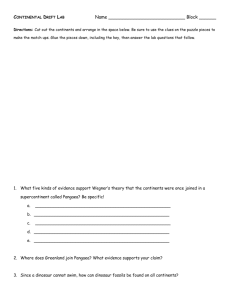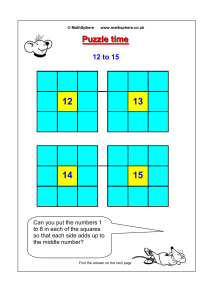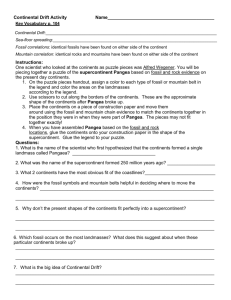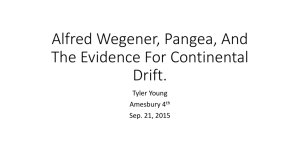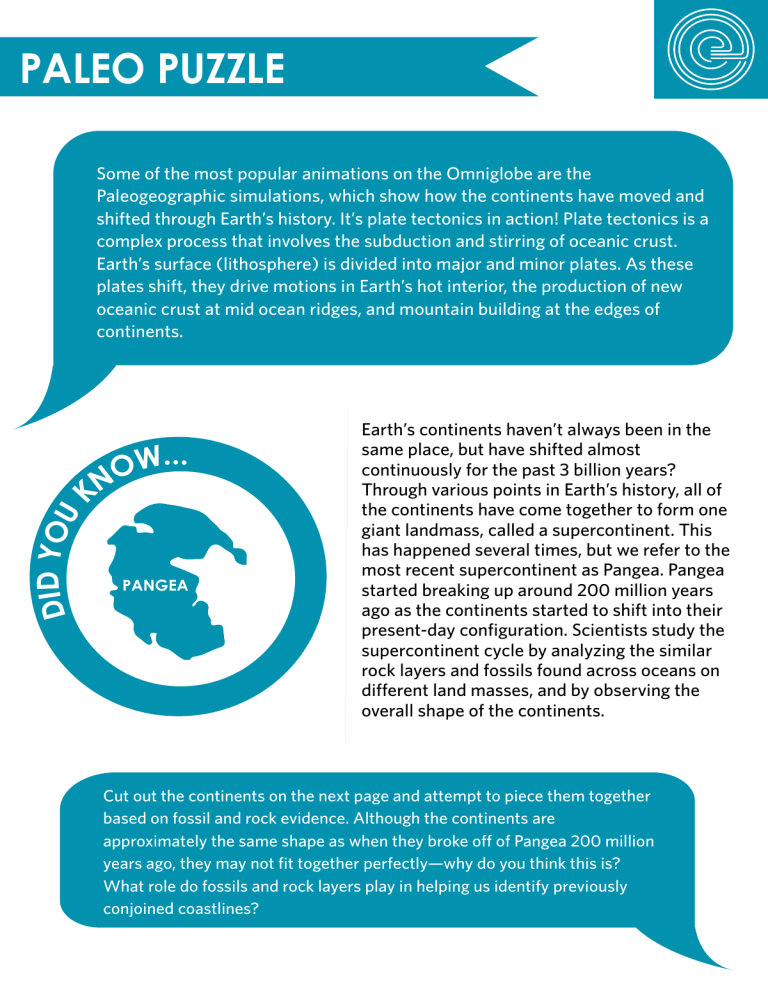
PALEO PUZZLE DID YOU K Some of the most popular animations on the Omniglobe are the Paleogeographic simulations, which show how the continents have moved and shifted through Earth’s history. It’s plate tectonics in action! Plate tectonics is a complex process that involves the subduction and stirring of oceanic crust. Earth’s surface (lithosphere) is divided into major and minor plates. As these plates shift, they drive motions in Earth’s hot interior, the production of new oceanic crust at mid ocean ridges, and mountain building at the edges of continents. W... O N PANGEA Earth’s continents haven’t always been in the same place, but have shifted almost continuously for the past 3 billion years? Through various points in Earth’s history, all of the continents have come together to form one giant landmass, called a supercontinent. This has happened several times, but we refer to the most recent supercontinent as Pangea. Pangea started breaking up around 200 million years ago as the continents started to shift into their present-day configuration. Scientists study the supercontinent cycle by analyzing the similar rock layers and fossils found across oceans on different land masses, and by observing the overall shape of the continents. Cut out the continents on the next page and attempt to piece them together based on fossil and rock evidence. Although the continents are approximately the same shape as when they broke off of Pangea 200 million years ago, they may not fit together perfectly—why do you think this is? What role do fossils and rock layers play in helping us identify previously conjoined coastlines? PALEO PUZZLE Using these three materials and the puzzle pieces on the next page of this worksheet, recreate the ancient supercontinent of Pangea. What you will need Glue Cardboard (8.5” x 11”) Scissors or X-acto knife Steps 1 Glue the following page (puzzle pieces) onto the cardboard and smooth out any wrinkles. 2 Once the glue has dried, use scissors or an X-acto knife to cut around the black outlines. 3 Mix up all of the newly cut puzzle pieces. 4 Recreate Pangea! 5 On which puzzle piece do you live? Mark your location with a star! ACTIVITY: PUZZLE If you’re having trouble with the puzzle, or curious to see plate tectonics in action, you can view the Omniglobe’s Paleo animation at https://www.youtube.com/watch?time_continue=2&v=olQ4PMDD5Cg&feature=emb_logo ANSWER KEY Is this what your Pangea looks like?

